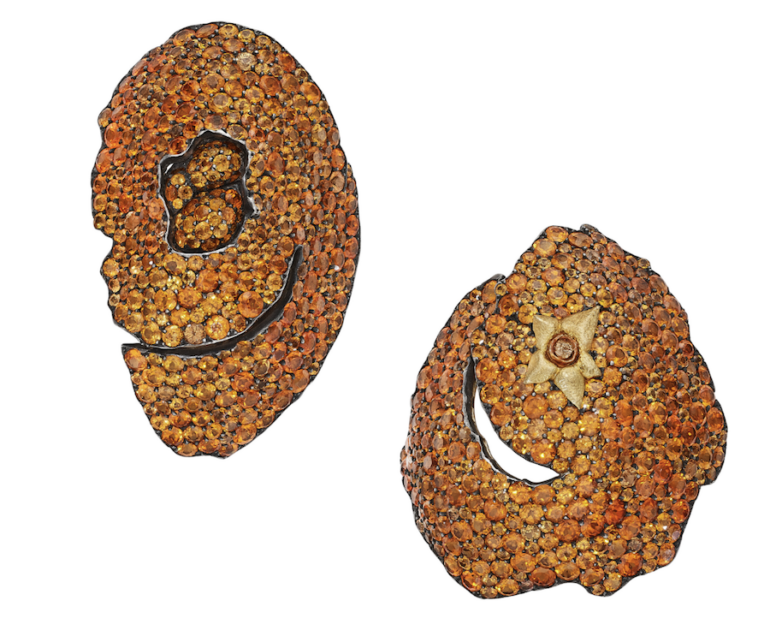
“If you would cherish friendship true,
In Aquarius well you’ll do
To wear this gem of warmest hue.”
So goes the Victorian-era ditty Tiffany & Co. used to promote January’s “zodiacal gem,” according to The Curious Lore of Precious Stones, quintessential guide to “the history and powers of gemstones” by gemologist George Frederick Kunz, who became a vice president at Tiffany in 1879 at the age of 23.
Garnets were believed to bring constancy, true friendship and fidelity to those born in January.
They run the gamut from emerald green tsavorite to the firey orange garnets of JAR’s “Orange Peel” brooches (top), but the warm-hued garnet Kunz was referring to was probably the red kind most of us think of as January’s birthstone.
Myths behind garnet usually have to do with the heart or blood, as they did for other red stones such as ruby, spinel, carnelian and bloodstone. “The symbolism of color played a very important part in recommending the use of particular stones for special diseases,” Kunz wrote.

Garnets were used to treat hemorrhaging and inflammatory diseases, and to stop the flow of blood. They were also believed to exert a calming influence, removing anger and discord.
Most color psychologists today would argue that red energizes rather than calms and that we should look to the green varieties for that. One of the perks of a birthstone that comes in all colors of the rainbow is that there’s one to suit every mood – and every piece of your wardrobe.
Antoinette Matlins, who just updated her wonderful guide Colored Gemstones, calls garnet “one of the most exciting families in the gem world” and one of the few untreated gems. What you see with garnet is usually what you get: the stone as it came out of the ground.

The January-born have always been able to get a lot of birthstone for their buck. That’s because we’re usually looking at the more common garnets.
In Secrets of the Gem Trade, Richard Wise reveals that the garnet jewelry we see most often is either almandine, a brownish-red iron-aluminum variety, or pyrope, a deep red magnesium-aluminum garnet.
But there are five other varieties, including malaya garnets. Malayas from Madagascar are being marketed as “color-change garnets” because they turn from pinkish orange in sunlight to a redder hue under incandescent light.
We won’t even go into andradite and grossularite. Suffice it to say: This is a big family.
Garnets can be had for $40 per carat but the finest and rarest can top $5,000 per. The best are easily mistaken for more expensive precious gems. Tsavorite, for example, can look amazingly like emerald and certain red garnets are dead ringers for ruby.
One of the rarest and most expensive garnets is demantoid (above left), which is green like tsavorite but slightly softer and with more fire. Along with those color-change garnets, new sources of demantoid and tsavorite have been discovered in Africa as well, so expect to see more green garnet in fine jewelry.
You may also be interested in:


